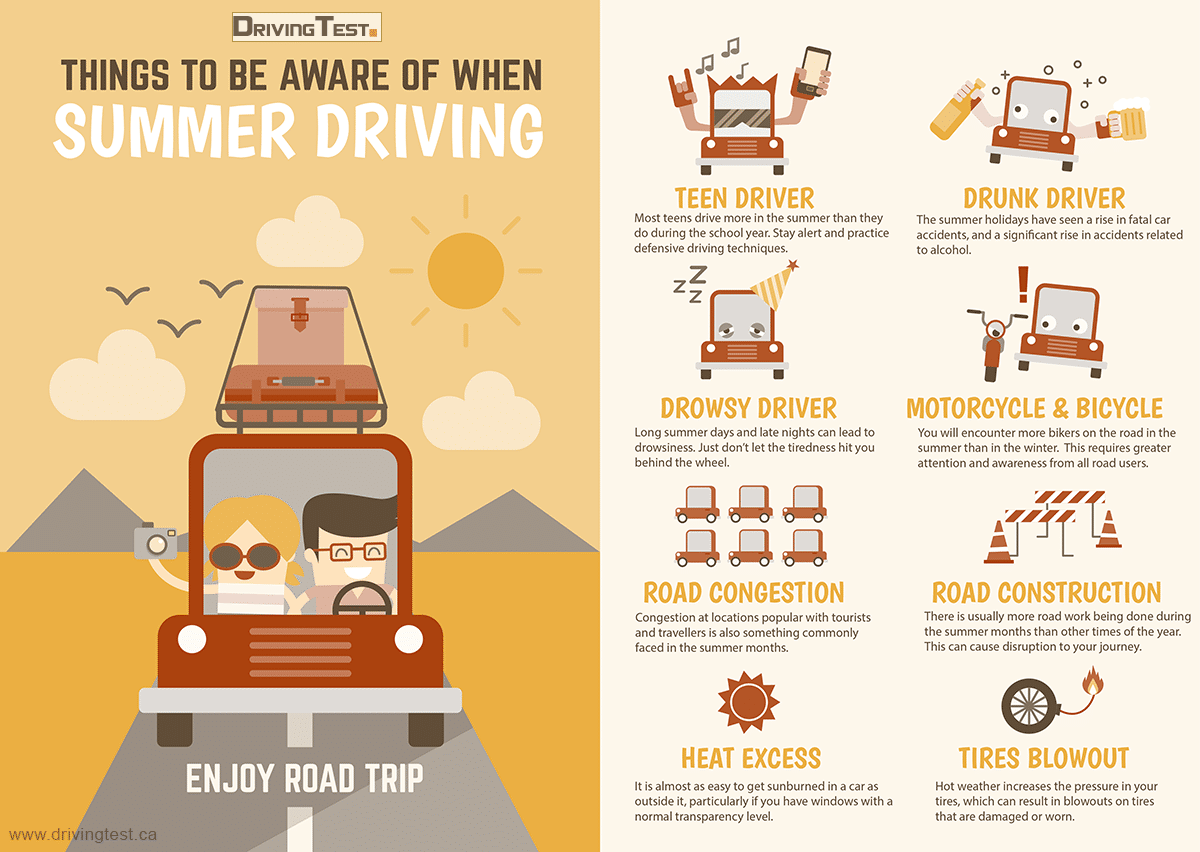THINGS TO BE AWARE OF WHEN SUMMER DRIVING

Common Driving Challenges and Hazards You Only Face In Summer
When it comes to driving hazards and challenges, winter is usually the season that most people think about. However, driving in summer has risks, challenges, and difficulties. Many of them are specific to warmer months of the year. Here are 10 of the most unusual, some of which are only considered when they happen:
Road Congestion
Congestion at locations popular with tourists and travelers is also common in summer. This can be an inconvenience, but it is also a risk if your stress levels rise to the point that your driving changes, e.g., you start driving more aggressively out of frustration or faster to make up for a lost time.
Tire Blowouts
Hot weather increases the pressure in your tires, resulting in blowouts on damaged or worn tires.
Road Works
More road work is usually done during the summer than at other times of the year. This can disrupt your journey, particularly when traveling to an area you are not familiar with.
Dehydration
Long car journeys in hot weather can lead to dehydration. It is, therefore, important to always keep a bottle of water with you.
Motorcycles and Bikes
You will encounter more motorcycles and bikes on the road in the summer than in winter. This requires greater attention and awareness from all road users, as people on two wheels are harder to spot.
Slippery Roads
You don’t often associate summer driving with slippery roads, but in certain conditions, it does happen. When there has been a period of dry weather that has allowed grime and dust to build up on the road surface, when it rains, the road surface can become slippery for some time.
Passenger Distractions
Monotony is common for families going on trips during the summer, especially when traveling with youngsters. The answer is to have plenty of in-car activities for children and make frequent stops to break up the journey.
Allergies
Allergies like hay fever can strike at any time, including when you are driving, even in modern cars with pollen filters. Not only can this make journeys uncomfortable, but hay fever can also increase your risk of having an accident. It can do this in many ways, including when you sneeze, or your eyes are watery. The distraction of having hay fever can also reduce your concentration as you focus more on the allergy and less on the road.
Sunburn
It is almost as easy to get sunburned in a car as outside it, particularly if you have windows with an average transparency level. The part of your body most at risk is the arm closest to the window, but it can affect other parts, depending on the strength of the sun and the time of day.
Losing or Damaging Your Key
Summer is the time of year when you are more likely to go to the beach or other types of day trips. What happens with your car key or remote on these occasions? What do you do with it when you go into the water? In these situations, it is easy to damage or lose your car key/remote.
You may not encounter all of these challenges and hazards, but you will have to deal with some of them. Awareness of them is the first stage to ensuring they don’t interfere with your summer driving enjoyment.